What Can We Learn From The Appearance Of Weed Leaves?

Today, we're diving deep into the world of weed leaves. From the different shapes and sizes to their vital role in the growth process, we're going to cover it all. We'll explore the types of leaves, how many leaflets they have (yes, that's a thing), and what it all means for your plant. Plus, we'll explain what the appearance of cannabis leaves tells us about a plants health.
- What is the main purpose of cannabis leaves?
- What are the different types of cannabis leaves?
- What can we understand from the number of leaflets on a leaf?
- What can leaves tell us about a plants health?
- What should healthy cannabis leaves look like?
- What is the difference between cannabis leaf and hemp leaf?
- Is it okay to smoke sugar leaves?
- Are cannabis leaves good for you?
- What can I do with leftover fan leaves and sugar leaves?
What is the main purpose of cannabis leaves?
Cannabis leaves (and all plant leaves for that matter) are true wonders of the natural world. Accountable for the photosynthesis of the plant, they are essentially the solar panels of the plant that allow for the absorption of light energy and its conversion into both CO2 and the chemical energy (sugars) required by the plant for growth.
The leaves are stuffed to the brim with chlorophyll, which not only gives the plants the green pigment but is also fully responsible for creating the food that the plant feeds off.
Chlorophyll is a pigment. Pigments come in all different hues, with the function they serve is dependent on the wavelength of light they most efficiently absorb. Nature abounds with a veritable smorgasbord of pigments, but it is only chlorophyll that can do the magic dance of converting sunlight into sugars.
Do cannabis leaves play any other roles?
Yes indeed. There is a range of other functions that cannabis leaves play. Apart from photosynthesis, they also act as a
- Sunscreen for the plant, filtering out the harsher UV wavelengths as well as heat shielding the underlying buds and flowers. The trichomes (the glittery, crystal-like resin glands) also help on this front and act as a defense mechanism against predators.
- The underside of every leaf is dotted with thousands of tiny holes called stomata. The Stomata are essentially the breathing apparatus of the plant, where CO2 enters, water vapor escapes and oxygen is also released.
- They also provide an avenue apart from the roots for the absorption of nutrients (foliar absorption).
What are the different types of cannabis leaves?
While all cannabis varieties are cut from roughly the same cloth and are often grouped together under the umbrella name of Cannabis sativa L., there are actually three separate genus' in the family tree. Two of these are widely known, even outside of weed circles - the infamous Sativa and Indica. The third, and lesser appreciated kin is Ruderalis. This is where we get those unique autoflowering genetics from.
All three of these breeds evolved separately from each other, and come with their own set of characteristics. Up until not so very long ago (say before the 1960s) there was very little contact between the cannabis cousins out in the wild, but thanks to the now 60 or so-year-old counter-culture movement and Jordanesque leap in the legality of weed worldwide in the last two decades, it is now pretty rare to find a pure Sativa, Indica, or Ruderalis plant available on the consumer market. Most new strains are a hybridized version, with breeders aiming to bring the best of both worlds (or all worlds in terms of autos) into a single package.
The main thing worth noting in this particular article is that all three of these genus' come with their very own unique leaf shapes, and we can often use the leaf shape to determine which of the three options is providing the dominant genetics.
And then there are the two different types of leaves that all cannabis plants grow, commonly referred to as fan leaves and sugar leaves. before we go any further let's quickly break down this section a little more...
What are fan leaves?
Fan leaves are the classic weed leaves that we have been mostly referring to up until this point. They are the large leaves that are grown during the vegetative growth period and are the powerhouses of the plant itself.
These fan leaves are composed of a central stem, with several fingers protruding outwards. The top layer is essentially a natural solar panel, and they also hold an emergency store of nutrients - which is why they show the most obvious signs of nutrient deficiency or toxicity issues, but more on this later. The bottom of the leaf is home to hundreds of thousands of stomata (anywhere between 1000 to 6000 per centimeter squared).
While fan leaves contain minimal levels of cannabinoids and terpenes, and are often discarded by commercial cultivators once the crop has been harvested, they do still offer a bunch of usage options. More on this later.
What are sugar Leaves?
Named sugar leaves as they are covered in a dusting of trichomes that closely resembles icing sugar, these leaves grow directly from the buds themselves and serve a few main purposes. They protect the bud against external damage, while also providing an extra boost of nutrients and energy during flower production.
Thanks to the covering of trichomes, sugar leaves hold a large amount of both cannabinoids and terpenes. While they are usually trimmed away from the bud, they can be used in almost countless ways. These days they are most commonly used for extract production at the commercial scale, but home growers will more often use them to make cannabutter or oil for edibles, or make some delicious rosin hash with a hair straightener.
What do sativa leaves look like?
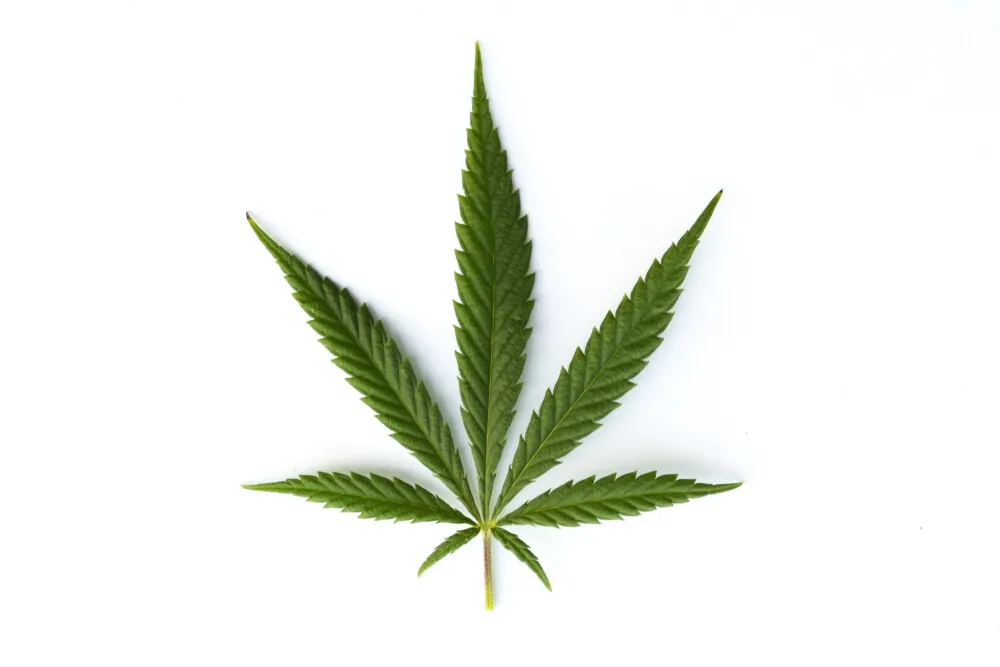
Sativa-dominant plants usually display leaves with long, thin fingers that are a paler shade of green than when compared to the other two types. Leaves of mature Sativa plants can have up to as many as 13 fingers, which is the most of any cannabis plant.
The lighter shade is the result of lower levels of chlorophyll being present in the leaves themselves, and this is one of the main contributing factors as to why Sativa plants take a little longer to finish the flowering period.
What do indica leaves look like?
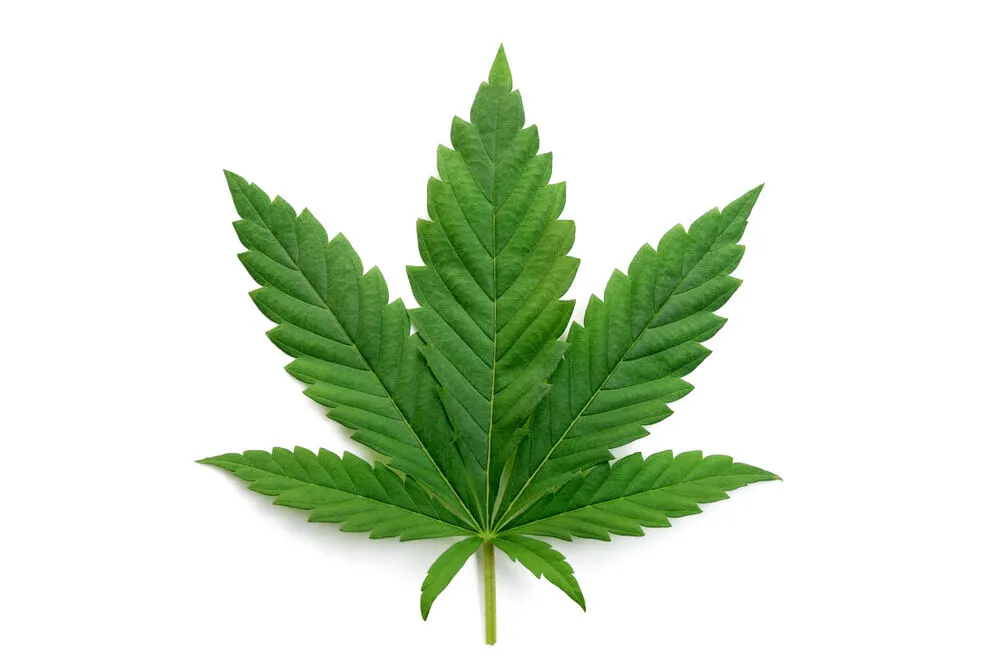
Indica-dominant plants will most often have much chubbier, shorter leaves which usually top out at around 9 fingers. They display a much deeper, heavier shade of green, with plants of Afghan heritage growing massive-sized fan leaves.
If you have Indica dominant plants with leaves that are lighter than usual, then you should look into boosting the nutrient available to the plants.
What do ruderalis (autoflower) leaves look like?
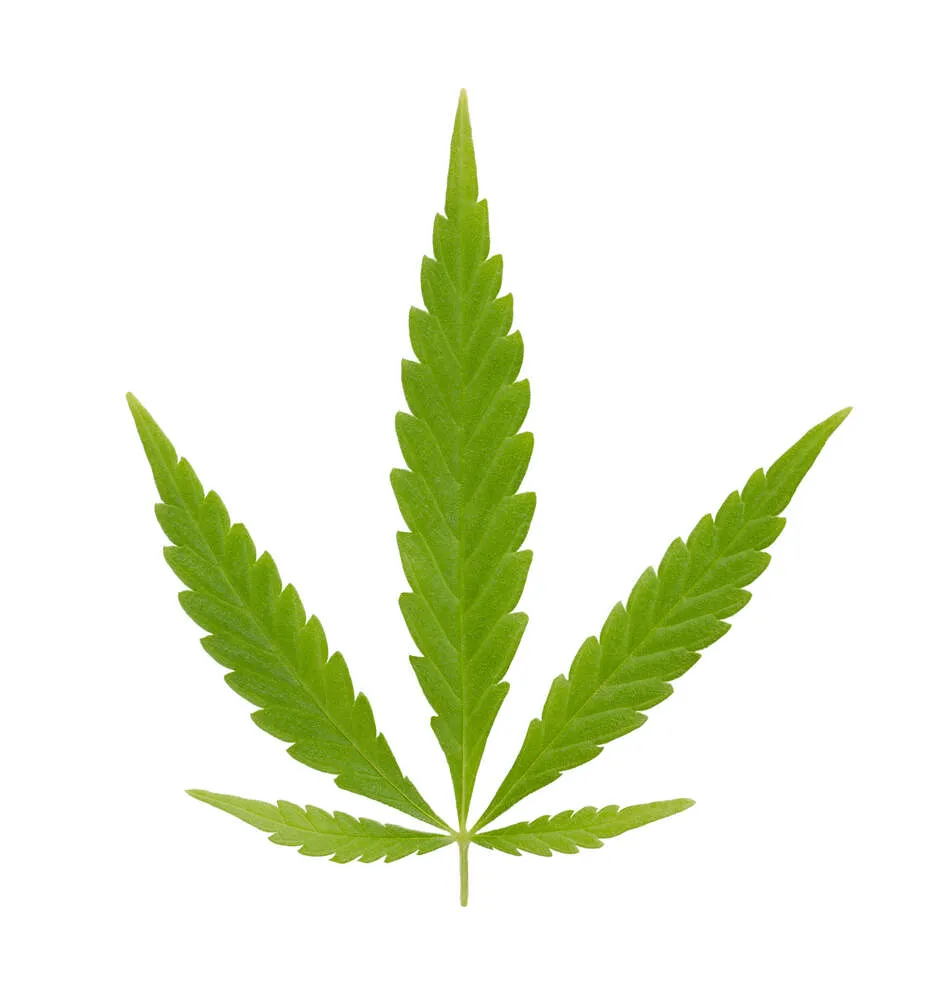
Ruderalis was the final genus to be discovered (only hitting the science journals back in the mid-1920s) mostly due to the fact that is much smaller plants and hail from the remote regions of northern Europe and Siberia.
While pure ruderalis plants produce much lower concentrations of cannabinoids than Sativa or Indica, they do come with one very unique ability - thanks to the geographical location of evolution and the lack of natural light for the majority of the year, they switch from the vegetative growth stage to flower production no matter the lighting conditions. Instead, they come with an inbuilt genetic timer that switches after three to four weeks of vegetative growth.
Ruderalis leaves are smaller and thinner than both Sativa and Indica, most closely resembling immature Satvia Leaves. They only grow 3 to 5 fingers.
What can we understand from the number of leaflets on a leaf?
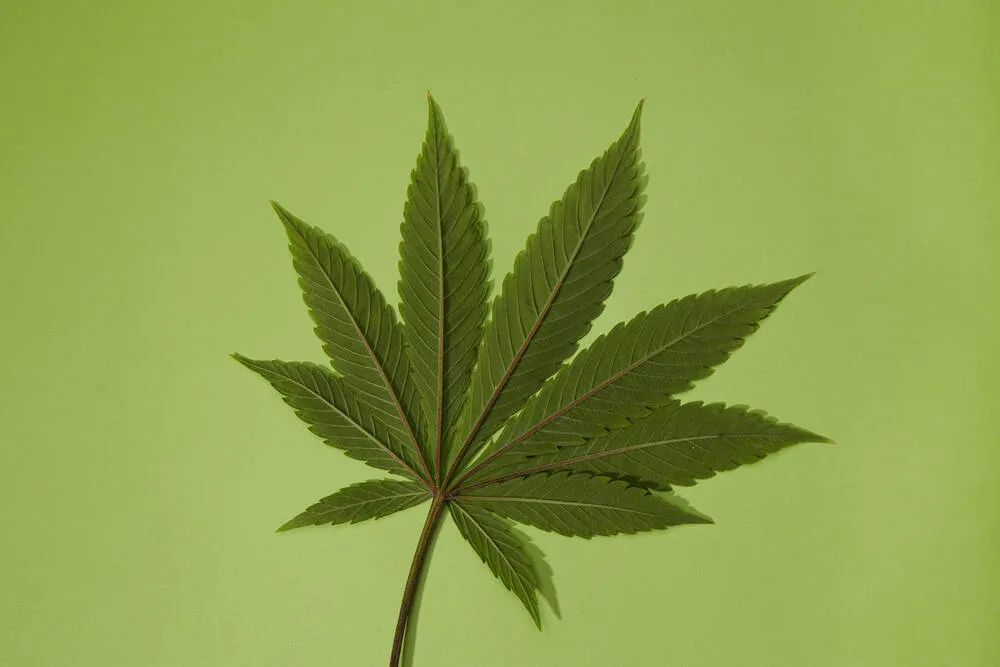
The number of leaflets (just another name for the fingers of the leaf) that the leaves have can offer some extra on top of the genetic makeup of the plant.
When the seedling first breaks free of the seed shell and begins to develop, the first set of leaves to appear are the cotyledon leaves. These are oval or teardrop-shaped leaves that are totally different from the rest of the leaf development but are totally normal.
The first set of true leaves comes with the jagged, zig-zagged edge but will almost always comprise of leaves with just a single leaflet. The next set usually produces leaves with three fingers, and then after that, it really depends on the genetics and the health of the plant. Sativa and Indica dominant plants may start to produce leaves with 5 to 9 leaves straight away while autoflowering strains will sometimes stick to three-fingered leaves for the first few sets (and maybe even the whole lifecycle, depending on the percentage of Ruderalis genetics).
For photoperiodic cannabis plants though, leaves that grow after the second or third set that has only 3 leaflets can be a telltale sign of stress, nutrient level problems, and pest or fungal issues leading to less-than-ideal overall health.
What can leaves tell us about a plants health?
The appearance of cannabis plant leaves can reveal a lot about the plant's overall health and whether it's experiencing any issues. Changes in color, shape, size, and texture can all indicate stress, disease, poor health, or pest infestation. For instance, yellowing leaves may suggest a nutrient deficiency, while curled leaves could be a sign of heat stress or spider mites. Brown spots or discoloration may indicate fungal or bacterial infections. By examining the leaves closely, growers can identify these problems early and take the necessary steps to treat them before they become more severe.
- Yellowing leaves: may indicate a nutrient deficiency, such as nitrogen or iron.
- Curled leaves: could suggest heat stress or pest infestation, such as spider mites.
- Brown spots or discoloration: may be a sign of fungal or bacterial infections.
- Wilting or drooping leaves: could indicate underwatering or overwatering.
- Stunted growth: may suggest root damage or a lack of nutrients.
- Twisted or distorted leaves: could be a sign of viral infection or herbicide damage.
- Burnt leaf tips: may indicate nutrient burn or pH imbalance.
- Holes or bite marks: could suggest pest infestation, such as caterpillars or snails.
- By examining the appearance of cannabis plant leaves, growers can diagnose plant problems and take the necessary steps to treat them, ultimately leading to healthier and more productive plants.
What should healthy cannabis leaves look like?
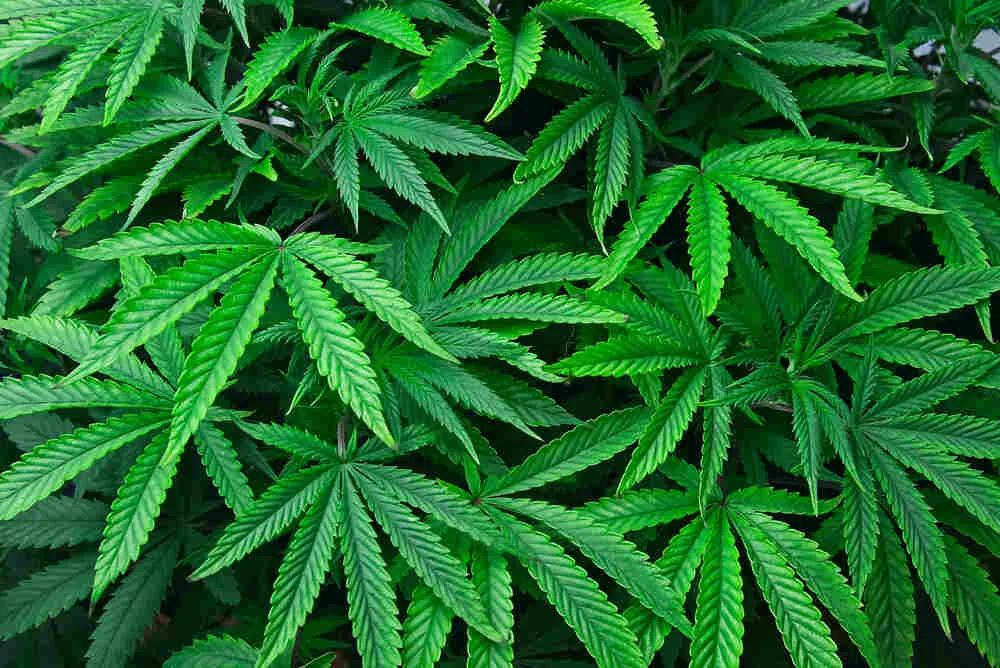
Healthy cannabis leaves should be a vibrant green color with a smooth texture and a slightly glossy appearance and feel waxy to the touch. With no discoloration, spots, or browning. They should be symmetrical and have a consistent shape, with no curling or twisting. The leaf edges should also be smooth, with no signs of wilting or drooping, sagging or limpness.
What is the difference between cannabis leaf and hemp leaf?
In terms of obvious physical differences between the leaf structure of cannabis plants and hemp plants, there is none. Both hemp and cannabis leaves appear identical, but what sets them apart is the level of cannabinoids contained within the plants. Hemp plants contain much smaller levels of psychoactive cannabinoids but do still produce CBD. Cannabis varieties, on the other hand, can contain much higher levels of THC and other psychoactive cannabinoids, which sets them apart from hemp plants.
In general, hemp plants will have leaves with thin, long leaflets.
Is it okay to smoke sugar leaves?
Yep, you can definitely smoke your sugar leaf trim.
But why would you, especially if you have a full harvest of bud ready and waiting to be rolled up?
Any part of the plant that has a dusting of trichomes can be smoked and will get you high, but most cultivators choose not to. This is because the leaves hold much higher concentrations of chlorophyll than the buds, which contributes heavily to the harshness of the smoke.
If you are just starting out in the cultivation game and you are worried that you may run out of flower options to smoke at some point, why not set up a perpetual harvest?
Indoor perpetual harvest routines are extremely easy to get going and will ensure you won't ever have to resort to smoking your sugar leaves.
Are cannabis leaves good for you?
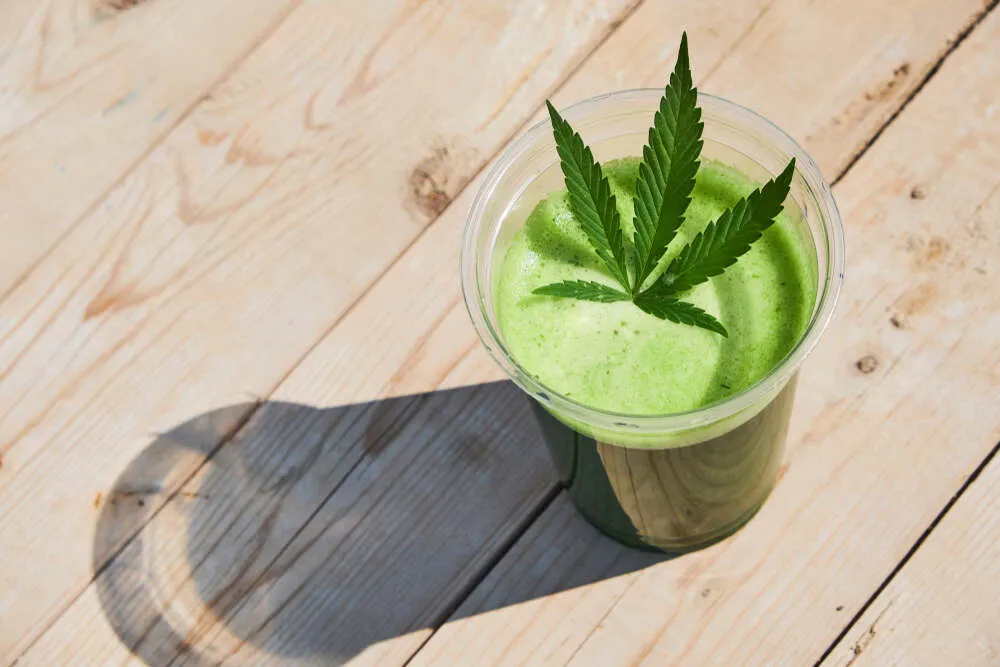
Absolutely!
Fan leaves are a powerhouse of nutritional fiber, antioxidants, polyphenols, and antibiotics. Plus, they have compounds that can help reduce cancer risks and inflammation.
Marijuana seeds and the leaves of the plant are actually thought of as somewhat of a superfood (thanks to the super high levels of both vitamins A and C - more than oranges even) and can be used in many ways.
- They can be added to juices, smoothies, and salads for a healthy boost of vitamins and minerals.
- They can also be dried and used to make tea. Simply add them to a teapot with some fresh ginger and pineapple and let it steep away for a few minutes and presto, you have yourself a delicious, healthy tea.
- Fan leaves and stems can also be used as a natural topical treatment for skin issues.
- They are a vital component in making Thai sticks - the OG canna-cigars.
- They make a great addition to your compost pile.
What can I do with leftover fan leaves and sugar leaves?
One of the most enjoyable things about growing your own weed is the fact that you have so much trim to play around with! Gone are the days of scrounging together enough table scraps or grinder kief to get a decent joint rolled.
But with so many options available these days, what exactly should you do with all that gorgeous, glistening, resin-covered trim?
- Boil up some cannabutter or (even better) cannabis-infused coconut oil and use it to make up a batch of whatever edibles take your fancy. Cannabutter and coconut oil are incredibly versatile and can be used in pretty much anything.
- Make your own tincture - tinctures are a great way to extend the shelf-life of your product and provide you with an easy way to get a dose of cannabinoids on the go.
- Make your own hash - cannabis trim can be used to make a variety of hash types, from bubble hash to rosin.
- Create your own topical remedy - cannabis-infused balms and salves can be used to provide localized relief for joint pain, muscle soreness, and skin conditions.
- Turn it into kief - grind up your fan leaves and sugar leaves and run them through a fine-mesh sieve to collect the dusty, concentrated trichomes.
- Make your own BHO - You will need some specialized equipment (which can all be found online) and you have to be extremely careful, but making your own Butane Hash Oil is the first step in creating most of the concentrates that dominate the current market.
-
20+ Years Experience
Over 500K seeds sold worldwide
100K+ Happy Customers -
Germination Guaranteed
Complete satisfaction or we will replace your order -
Dutch and USA Genetics
Master breeders inspiring strains from across the world -
1-5 Day Delivery - Guaranteed
Free Express Shipping to the US, Canada and UK








